Disclosure: This article contains affiliate links. We may earn a commission from purchases at no extra cost to you, which helps our travel content.
The escalator descends and I'm suddenly awash in electric blue light. Cave-like rock formations loom overhead, painted in an otherworldly azure that feels both primordial and futuristic. I've edited countless articles about hidden urban treasures, but Stockholm's tunnelbana system—the city's metro network—stands apart as a masterpiece of public art that most travelers rush through without truly seeing. As someone who's spent decades documenting endangered landscapes and cultural practices, I find it delightfully ironic that one of Europe's most accessible art experiences happens beneath the streets, in spaces designed for transit rather than contemplation. Yet here, across 90+ stations spanning 110 kilometers, lies the world's longest art gallery—a sprawling underground museum where your metro ticket is the only admission fee required.
The History Behind Stockholm's Underground Canvas
Stockholm's subway art program began in the 1950s, when Swedish artists proposed transforming utilitarian transit spaces into something more profound. What started as a modest beautification project evolved into a decades-long artistic movement that continues today. The initiative reflected Sweden's post-war commitment to making art accessible to everyone, regardless of social status—a democratization of aesthetics that resonates deeply with me.
As the daughter of a geologist, I've always been fascinated by the ways humans interact with stone and earth. Here in Stockholm's tunnelbana, artists didn't merely decorate the underground—they engaged with it. Many stations preserve exposed bedrock, incorporating the natural geology into their designs rather than concealing it behind sterile tiles. It's a beautiful metaphor for the Swedish relationship with nature: respectful coexistence rather than dominance.
During my research at National Geographic Books, I encountered similar philosophies in indigenous cultures worldwide, but rarely have I seen it manifested so boldly in a modern urban context. The tunnelbana represents a rare convergence of public infrastructure, artistic vision, and cultural values—a living museum that evolves as the city above it changes.
Each decade brought new artistic movements and themes to the network. The blue cavernous wonder of T-Centralen (the central station) represents the organic stylings of the 1970s, while later stations reflect shifting political and environmental concerns of subsequent decades. Walking through these stations is like paging through a visual anthology of Swedish cultural history—each platform a chapter, each line a volume in this underground library of art.
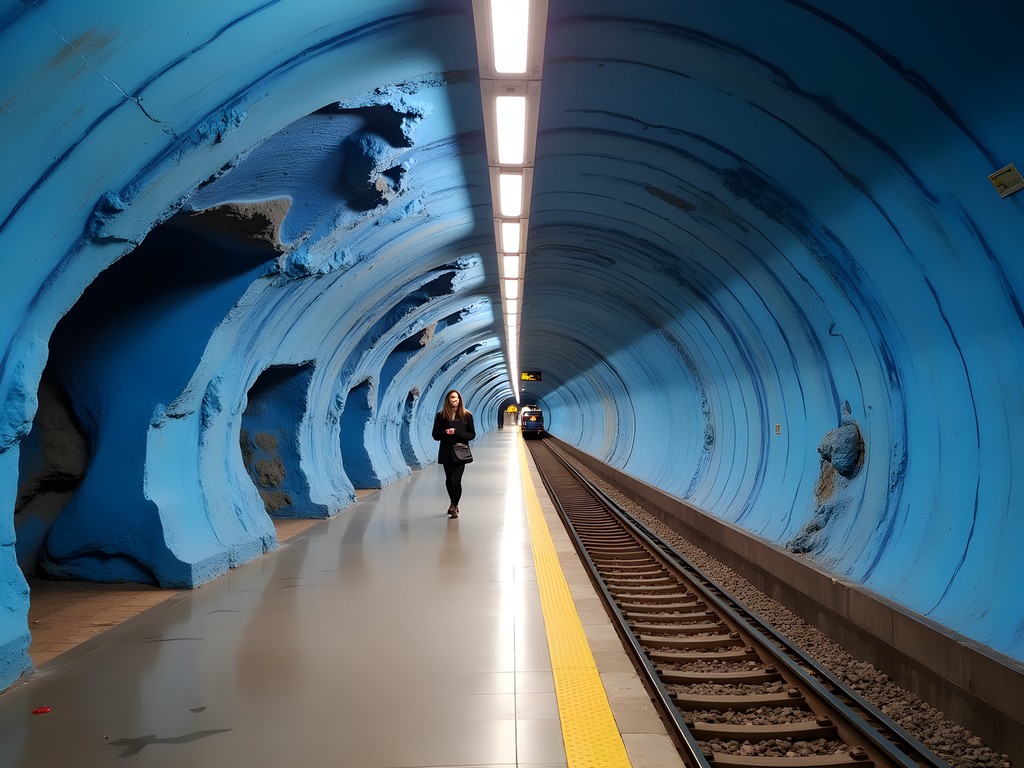
💡 Pro Tips
- Purchase a 24 or 72-hour travel card rather than single tickets if you plan to explore multiple stations
- Visit during mid-morning or early afternoon on weekdays to avoid commuter crowds
- Download the SL app (Stockholm's public transport app) to easily navigate between art stations
The Must-See Metro Masterpieces
After three visits to Stockholm's underground network—methodically exploring different lines each time—I've developed a curated list of stations that showcase the system's artistic diversity. If your time is limited, these are the essential stops on your subterranean art crawl:
T-Centralen (Blue Line): The network's beating heart features abstract blue floral and vine patterns painted directly onto rugged bedrock. Artist Per Olof Ultvedt created this peaceful blue cavern in 1975 to provide a calming atmosphere for commuters transferring between lines.
Solna Centrum (Blue Line): A striking red and green station that resembles a post-apocalyptic sunset. The dramatic red ceiling looms over a pine forest silhouette, created by artists Karl-Olov Björk and Anders Åberg as commentary on rural depopulation and environmental concerns.
Kungsträdgården (Blue Line): Perhaps the most elaborate station, designed as an underground archaeological excavation. Remnants of the old Makalös Palace that once stood above are incorporated into the design, alongside bright green sculptures, classical motifs, and artifacts from the National Museum. It's a fascinating dialogue between past and present.
Stadion (Red Line): A rainbow-arched celebration created for the 1912 Olympics, this station's bright blue walls and vivid rainbow are instantly mood-lifting. It's one of the most photographed stations, and for good reason—the colors are spectacular against the simplified architectural elements.
Rådhuset (Blue Line): Resembling a rustic cave bathed in warm terracotta tones, this station near the courthouse feels like an ancient cavern. The rough-hewn walls and minimalist approach create a contemplative atmosphere unlike any other station.
Navigating between these artistic landmarks is straightforward with a Stockholm travel guide and comfortable walking shoes. I found myself spending 15-20 minutes in each station, observing details and photographing different angles, so plan accordingly if you're attempting to see multiple stations in one day.
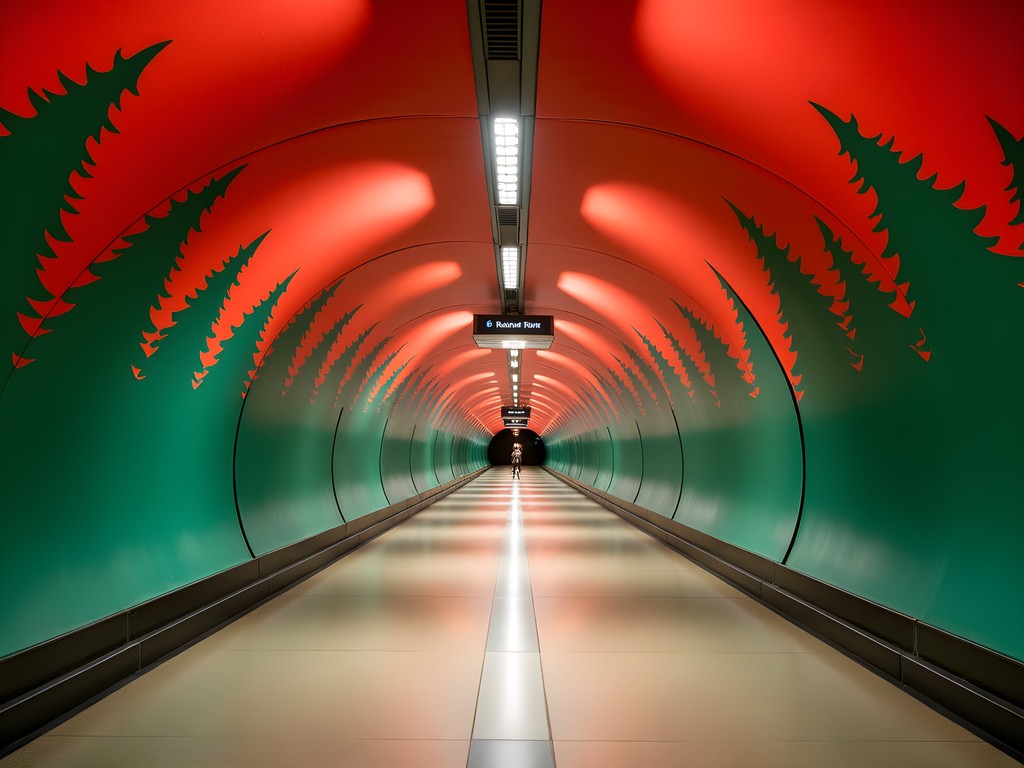
💡 Pro Tips
- The Blue Line contains many of the most spectacular stations, so prioritize it if time is limited
- Look for small details and hidden art pieces—many stations have sculptures or installations tucked into corners
- Visit Kungsträdgården last as it's a terminal station, allowing you to spend more time without disrupting your journey
Photography Tips for Underground Art
Capturing Stockholm's underground art presents unique challenges that tested my photography skills honed during years of documenting landscapes across continents. The combination of artificial lighting, moving crowds, and unusual architectural spaces requires specific techniques:
Equipment Considerations: While professional equipment yields superior results, don't feel intimidated if you're traveling light. My compact travel camera performed admirably in these challenging lighting conditions. Its fast lens and good low-light performance captured the vibrant colors without requiring a tripod, which isn't practical in busy stations anyway.
Timing Is Everything: The golden hour concept applies underground too, but it's defined by commuter patterns rather than sunlight. Visit between 10 AM and 3 PM on weekdays for the least crowded conditions. Early Sunday mornings are practically deserted, offering rare opportunities for people-free shots.
Embrace the Wide Angle: The sweeping architectural features of stations like Solna Centrum demand a wide perspective. If your camera or smartphone has a wide-angle option, this is the place to use it. Position yourself at the end of platforms or on stairways for compositions that capture the grandeur of these spaces.
Light and Color Challenges: The artificial lighting in the stations often creates strong color casts. While it's tempting to correct this in editing, I found that preserving these distinctive hues—the blue of T-Centralen, the red of Solna Centrum—maintains the authentic experience. However, slight adjustments to contrast can help details pop without sacrificing atmosphere.
Include Human Elements Selectively: While empty stations showcase the architecture, including occasional passengers can add scale and human interest. I found that long exposures (if you have a mini tripod or steady surface) create interesting blurred figures that convey the transit nature of the space while keeping the focus on the art.
Respect the Space: Remember that despite its artistic significance, this is a functioning transit system. Stand aside for commuters, never use flash photography, and be mindful not to block passages while setting up shots. My years working with National Geographic photographers taught me that the most respectful photographers often get the most compelling images.
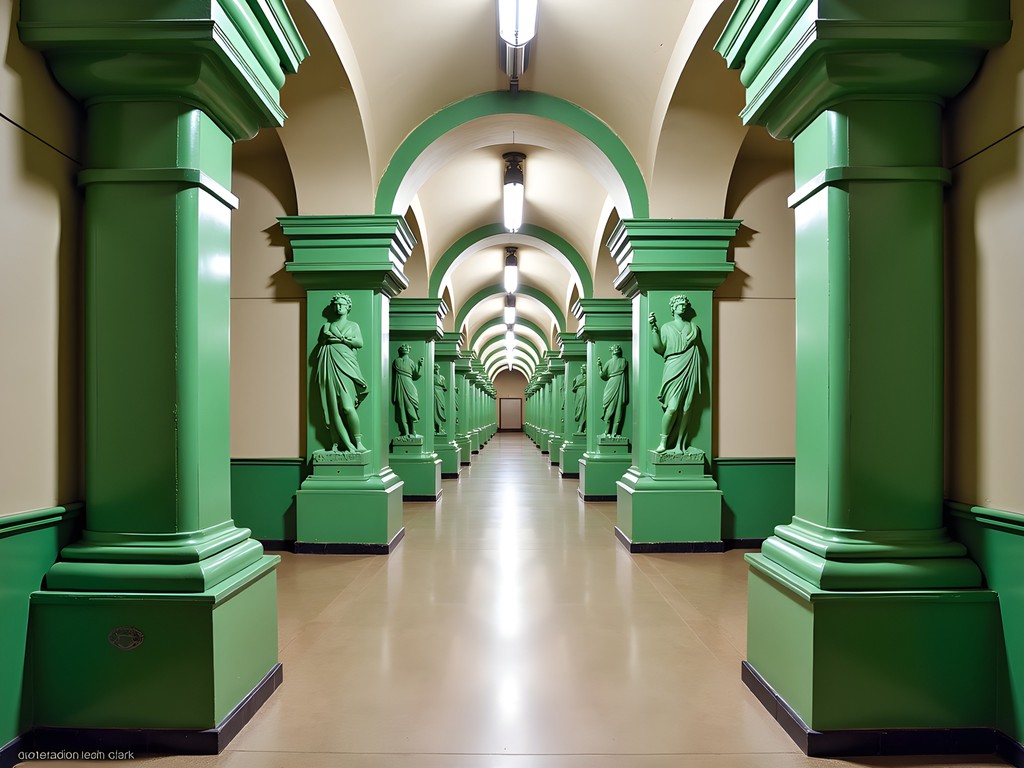
💡 Pro Tips
- Use burst mode when photographing from moving escalators to ensure at least one sharp image
- Look for reflections in glass barriers and metal surfaces for creative compositional opportunities
- Bracket your exposures (take multiple shots at different exposure levels) in challenging lighting conditions
Budget-Friendly Exploration Strategies
When I left my publishing career after my health scare, I became acutely aware of the value of experiences over possessions. Stockholm has a reputation as an expensive destination, but exploring its underground art gallery is remarkably affordable with the right approach:
Transportation Passes: A 24-hour travel card costs about 160 SEK (approximately $15 USD), granting unlimited access to all stations. For a dedicated art tour, this is substantially cheaper than most museum admissions. If you're staying longer, the 72-hour card offers even better value at around 315 SEK ($30 USD).
Self-Guided vs. Organized Tours: While organized tours provide historical context (typically costing 200-350 SEK), I found that a self-guided exploration with a Stockholm metro art map allowed for more flexibility and photographic opportunities. The free SL (Stockholm Public Transport) app includes a map marking stations with significant art installations.
Strategic Timing: Combining your art exploration with actual transportation needs maximizes the value of your travel card. I structured my days to begin with underground art viewing during mid-morning, followed by surfacing near attractions I wanted to visit, effectively using the metro both as a gallery and practical transportation.
Free Resources: Before my trip, I downloaded the official "Art in the Stockholm Metro" PDF guide from the SL website, which provides historical context and artist information for major stations. The Stockholm Public Library also offers free Wi-Fi and houses books on the subway art if you want deeper background.
Accommodation Strategy: Staying near a major hub station like T-Centralen or Gamla Stan provides easy access to the art routes. During my visit, I found an affordable apartment through a home-sharing service in the Södermalm district, just two stops from the central stations but considerably cheaper than city center accommodations.
Food Hacks: Stockholm's food scene can quickly deplete a travel budget. I packed a lightweight lunch to enjoy between station visits, finding quiet benches in less busy stations like Rådhuset where I could contemplate the art while refueling. Many stations have small cafés at street level where you can grab affordable Swedish fika (coffee and pastry) before descending to the next artistic venue.
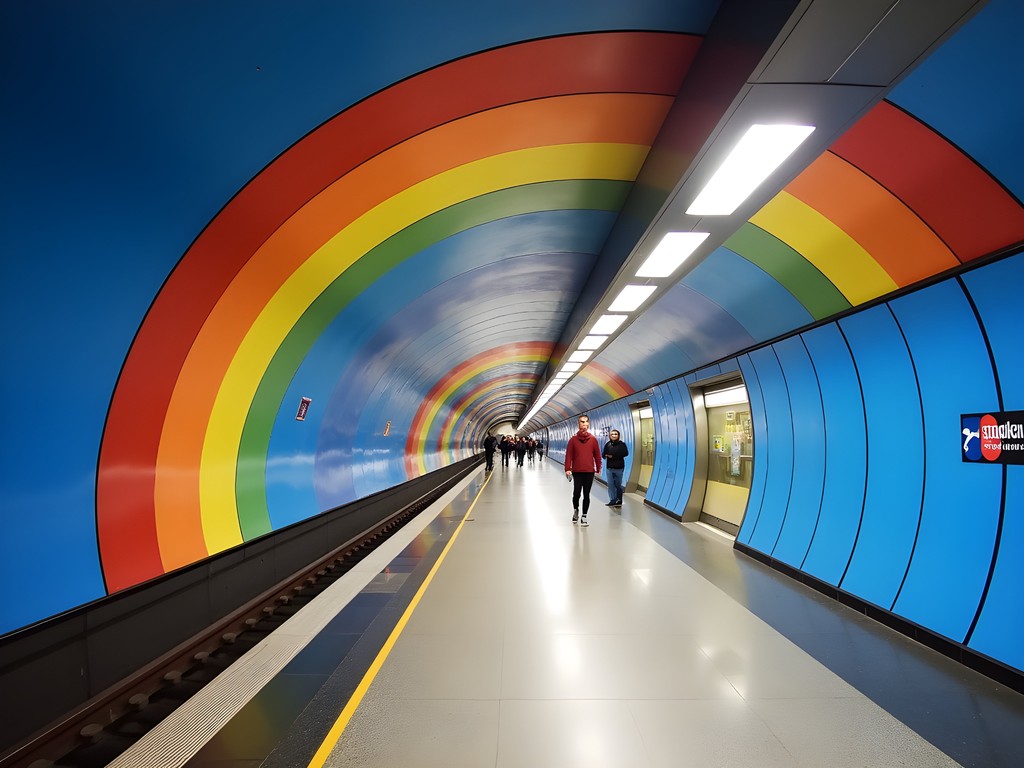
💡 Pro Tips
- Purchase your travel card at the airport upon arrival to maximize its value
- Download the free SL app for real-time transportation updates and a map of art stations
- Consider staying in neighborhoods along the Green Line for more affordable accommodation with easy access to the art stations
Cultural Context: Art as Public Necessity
As I wandered through Stockholm's underground galleries, notebook in hand with editor's eye engaged, I couldn't help but reflect on how this artistic approach to public infrastructure represents a distinctly Scandinavian philosophy. The tunnelbana art program embodies several core Swedish values that travelers should understand to fully appreciate what they're seeing:
Allemansrätten and Democratic Access: The Swedish concept of "allemansrätten" (the right to roam) extends beyond nature into cultural spaces. Just as Sweden's countryside is accessible to all, so too should art be available without barriers. The metro art program ensures that even citizens who never step foot in a traditional museum encounter meaningful artistic expressions daily.
Functional Beauty: The Scandinavian design principle that useful objects should also be beautiful finds perfect expression in these stations. Rather than treating art as separate from daily life, the tunnelbana integrates aesthetic experiences into necessary infrastructure. It's a rejection of the false dichotomy between pragmatism and beauty that plagues so many urban developments worldwide.
Environmental Dialogue: Many stations, particularly those created in the 1970s and 1980s, contain environmental messages that were ahead of their time. Solna Centrum's dramatic forest silhouettes against a red sky were created as commentary on deforestation and rural depopulation—issues that have only grown more relevant in our climate-conscious era.
Historical Continuity: Stations like Kungsträdgården function as archaeological sites, incorporating elements of buildings that once stood above them. This creates a vertical timeline where commuters physically move through layers of history, fostering a connection between past and present that I found deeply moving.
During my career at National Geographic Books, I edited countless pieces about how societies express their values through public spaces. Stockholm's tunnelbana stands as one of the most successful examples I've encountered—art not as luxury or afterthought, but as essential component of civic infrastructure. It represents a vision of urban design where beauty is considered a public necessity rather than an amenity.
As you explore these underground spaces, consider how this approach differs from the utilitarian transit systems of many other global cities. The tunnelbana makes a powerful statement that the daily commute—often the most dreaded part of urban life—deserves to be transformed into a moment of reflection, wonder, and cultural engagement.
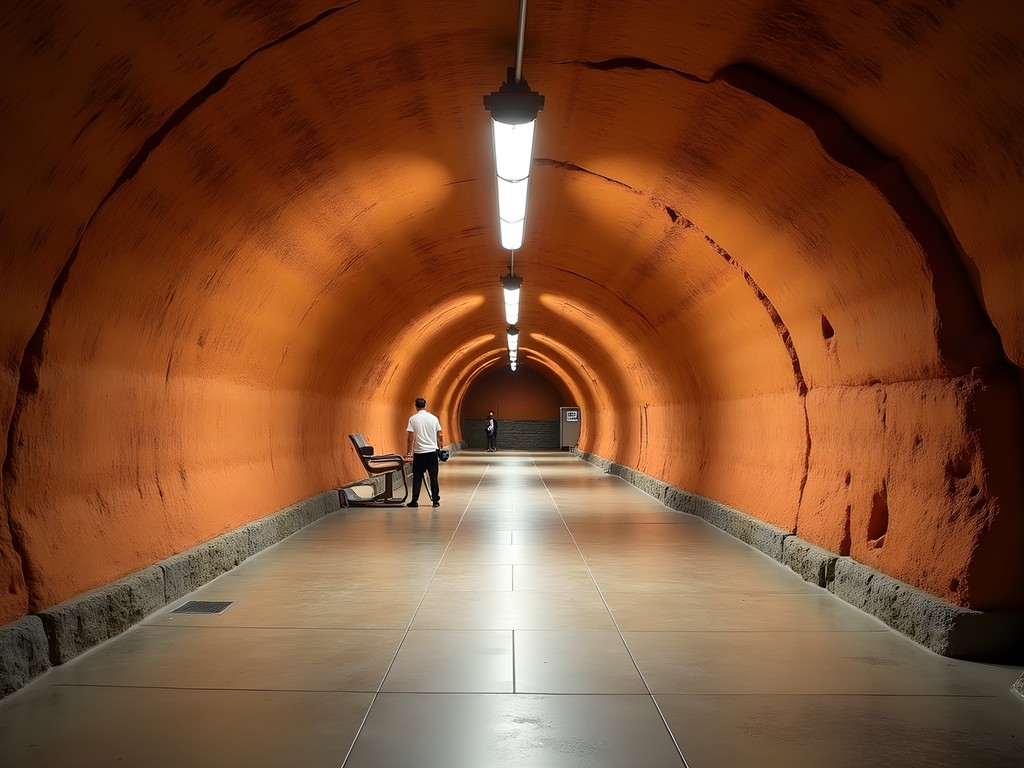
💡 Pro Tips
- Read about the specific artists before visiting to understand their intentions and historical context
- Notice how different decades of art reflect changing Swedish social concerns and artistic movements
- Consider how your home city's public spaces could be transformed by similar artistic approaches
Final Thoughts
As I ascend the escalator at Kungsträdgården station for the final time, leaving behind its green sculptures and archaeological treasures, I'm struck by how this underground journey has edited my perception of what public spaces can be. Stockholm's tunnelbana doesn't merely transport bodies from point A to B—it transports minds into realms of imagination, political thought, and cultural reflection. In our increasingly privatized world, where art often hides behind admission fees and velvet ropes, the tunnelbana stands as a radical statement that beauty belongs to everyone who passes through these spaces. Whether you're an art enthusiast, photographer, budget traveler, or simply someone who appreciates thoughtful urban design, Stockholm's underground gallery rewards those willing to look beyond the utilitarian purpose of a transit system and see the canvas it can become. Next time you're rushing through your local subway station, I hope you'll pause—just for a moment—and imagine what could be possible if we all viewed our public infrastructure through Stockholm's artistic lens.
✨ Key Takeaways
- Stockholm's metro contains the world's longest art gallery spanning 90+ uniquely designed stations
- A 24-hour travel card provides unlimited access to this underground art museum for around $15 USD
- The Blue Line contains many of the most spectacular artistic stations
- Visit during mid-morning weekdays or early Sunday mornings for the best photography opportunities
- The art program reflects core Swedish values of democratic access to culture and environmental awareness
📋 Practical Information
Best Time to Visit
year-round (mid-morning weekdays or early Sunday mornings for fewer crowds)
Budget Estimate
$15-30 USD (cost of 24-72 hour travel cards)
Recommended Duration
half-day to full weekend
Difficulty Level
Easy

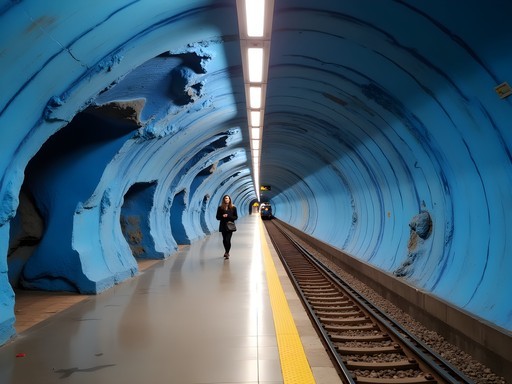
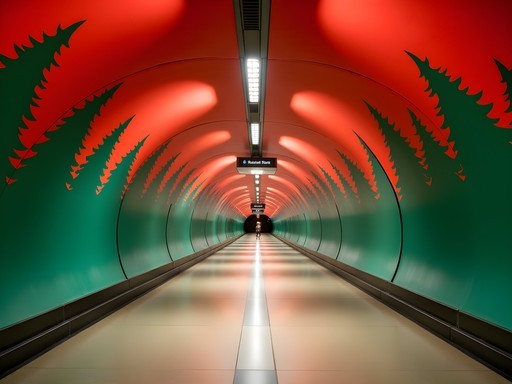
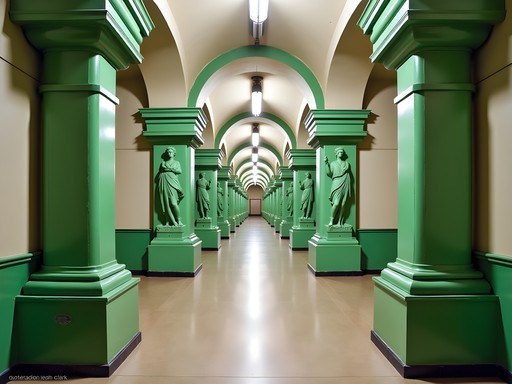
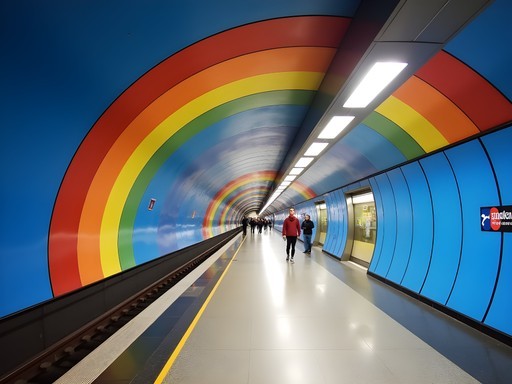
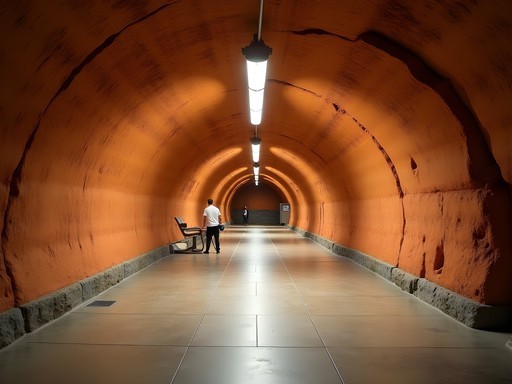



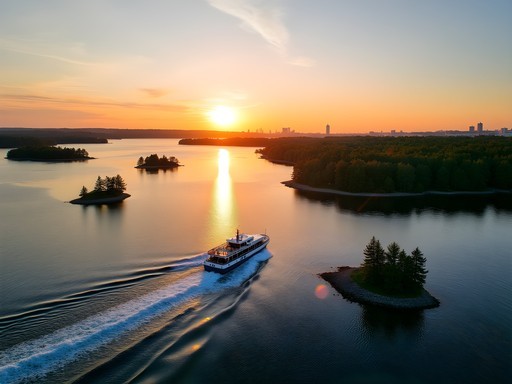
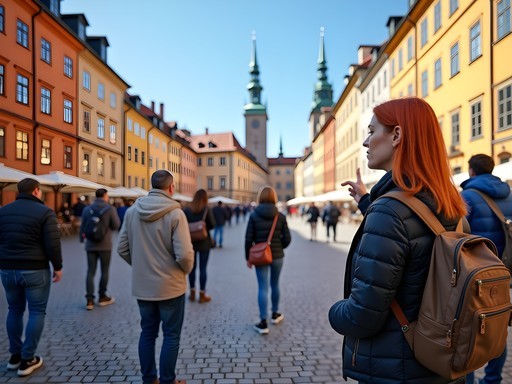


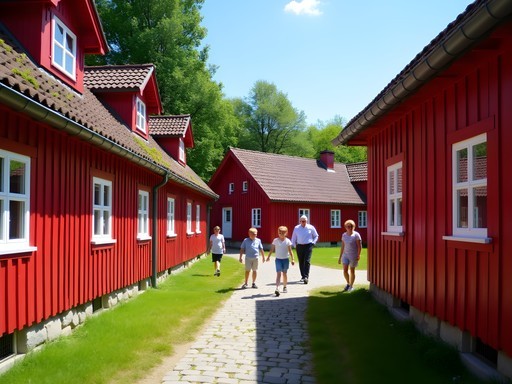
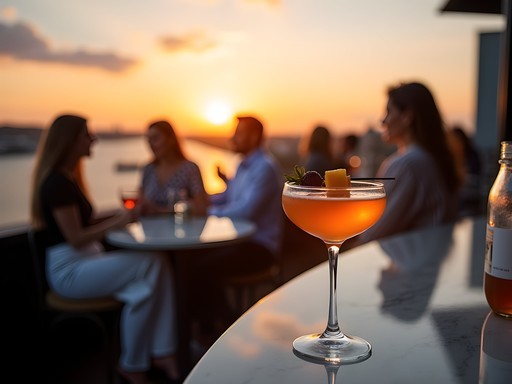

Comments
Casey Andersson
This brought back amazing memories! I spent three days exploring Stockholm's metro art last winter. The blue line stations were my absolute favorites - especially Solna Centrum with that dramatic red sky above green forest silhouettes. One tip I'd add: if you're serious about photography, consider joining one of the official SL Art Tours that run on weekends. The guides sometimes get you access to quieter viewing spots and share fascinating stories about the artists. Also, Stadion station's rainbow arch looks completely different depending on the time of day - morning light creates the most vivid colors!
coolblogger
Just wow! Never knew public transit could be such an art experience. Your photos are stunning - what camera settings did you use in the low light?
Leah Clark
Thank you! I shot most of these handheld at f/2.8, 1/60s, ISO 800-1600. A small tripod helps for the wider station shots!
Sophia Gomez
I was in Stockholm for a conference last year and squeezed in metro station visits between meetings. Your guide would have saved me so much time! I spent a full hour at Kungsträdgården - those green sculptures against the black and white checkered floor are mesmerizing. For anyone visiting, I'd recommend the Stockholm Card if you're planning to see other attractions too. It includes unlimited public transport and entry to many museums. The station art pairs beautifully with visits to Fotografiska and Moderna Museet!
cityadventurer
Did you find 72 hours enough time? Heading there in March!
Sophia Gomez
For me it was perfect, but I was mixing business and leisure. If you're 100% focused on sightseeing, you could easily fill 72 hours!
luckynomad
OMG those blue walls at T-Centralen! 😍 Your photos are incredible! I'm adding this to my bucket list right now!
redperson
We did the underground art tour last month and it was the highlight of our Stockholm trip! Rådhuset with those red cave walls was absolutely surreal. We bought a 24-hour transit pass which was perfect for station-hopping without worrying about individual fares. One tip: bring a wide-angle lens if you have one - the scale of these spaces is hard to capture otherwise.
oceanseeker
This looks amazing! Is there a specific time of day that's best for photography in these stations? I'd love to avoid crowds when I visit next spring.
Leah Clark
Early mornings (before 8am) or late evenings after rush hour (post 7pm) are definitely the sweet spots for photography! Weekdays are also much quieter than weekends.
oceanseeker
Thanks so much! Will definitely plan for early morning visits then.
escapemate
Just got back from Stockholm and used this guide - it was spot on! One thing to add: weekends are way better for photos than weekdays. We went Sunday morning and had some stations almost to ourselves. The blue line stations were my favorite, especially T-Centralen with those amazing blue leaf patterns on the ceiling. Bring a wide angle lens if you have one!
bluebackpacker2732
Great post! I'm heading to Stockholm next month on a tight budget. Is it worth getting the 24-hour transit pass just to see these stations? Or should I spread my visits across a few days with single tickets? Any stations that are absolute must-sees if I'm short on time?
escapemate
Not the author but when I went last year, the 24hr pass was totally worth it! We did a metro art crawl in one day and saw about 8-10 stations. T-Centralen (blue line), Solna Centrum, and Rådhuset were my favorites!
bluebackpacker2732
Thanks for the tips! Did you feel rushed trying to see them all in one day?
escapemate
A little bit, but it was still fun! Just start early. We started around 9am when it was less crowded.
Casey Andersson
Leah, this guide is absolutely fantastic! I visited these stations last month during my Scandinavian luxury weekend and was completely blown away. Rådhuset's cave-like atmosphere felt like stepping into another world. We actually booked a private early morning photography tour before the commuter rush - worth every penny for those empty station shots! My favorite had to be Kungsträdgården with those incredible green sculptures. One tip for visitors: the lighting changes dramatically throughout the day, so if you're serious about photography, consider visiting the same stations at different times. My Sony mirrorless with a wide angle lens captured the grandeur perfectly.
escapemate
Did you need special permission for the private tour? Or just showed up early?
Casey Andersson
We booked through the Stockholm tourism office! They have early access options before the stations get busy with commuters. Not cheap but worth it for photographers!
beachzone
Those blue stations look incredible! Adding this to my bucket list right now.
Casey Andersson
They're even better in person! The blue at T-Centralen literally made me gasp.
beachzone
Good to know! Is it crowded with photographers or can you actually get decent shots?
Venture X
Premium card with 2X miles, $300 travel credit, Priority Pass